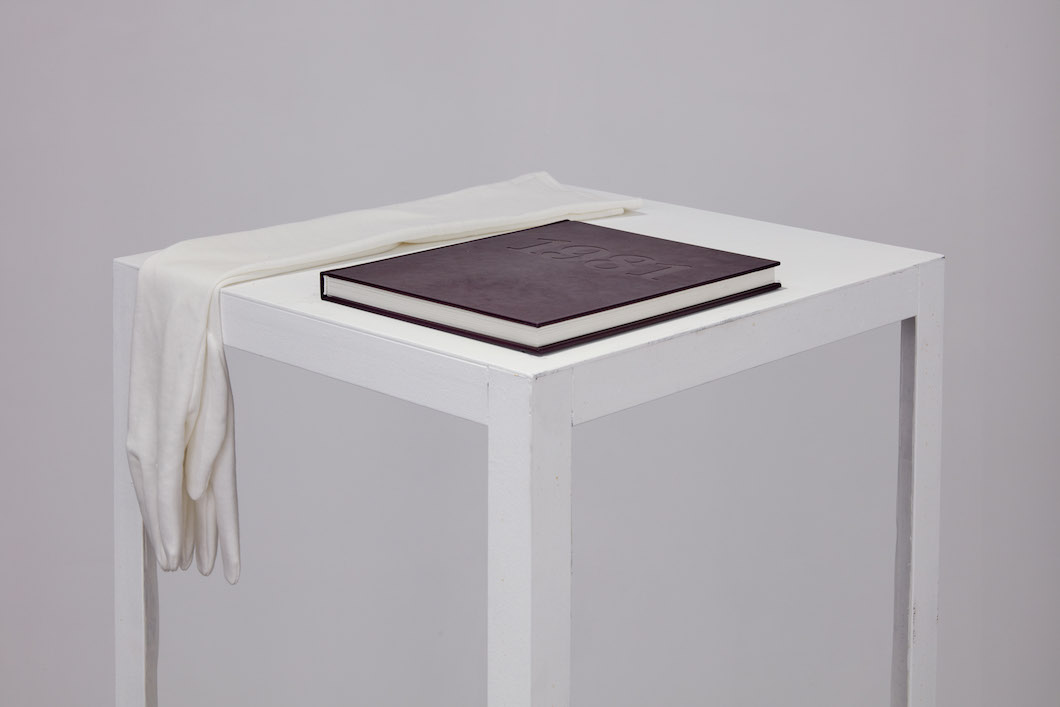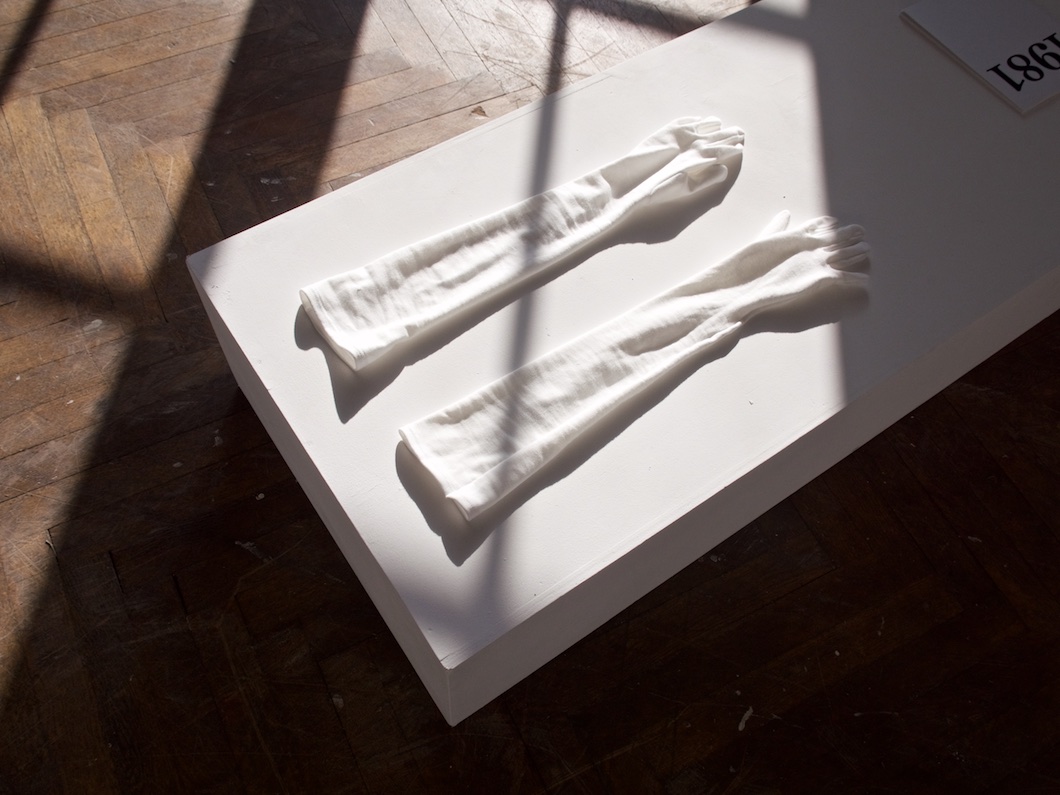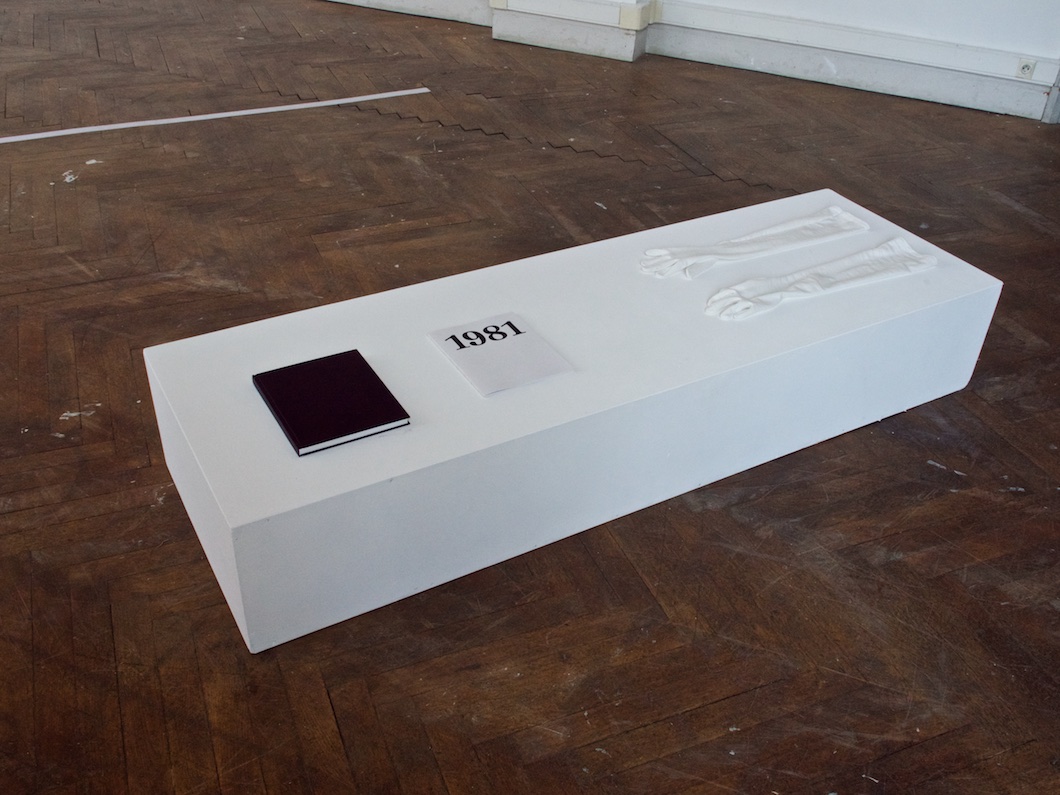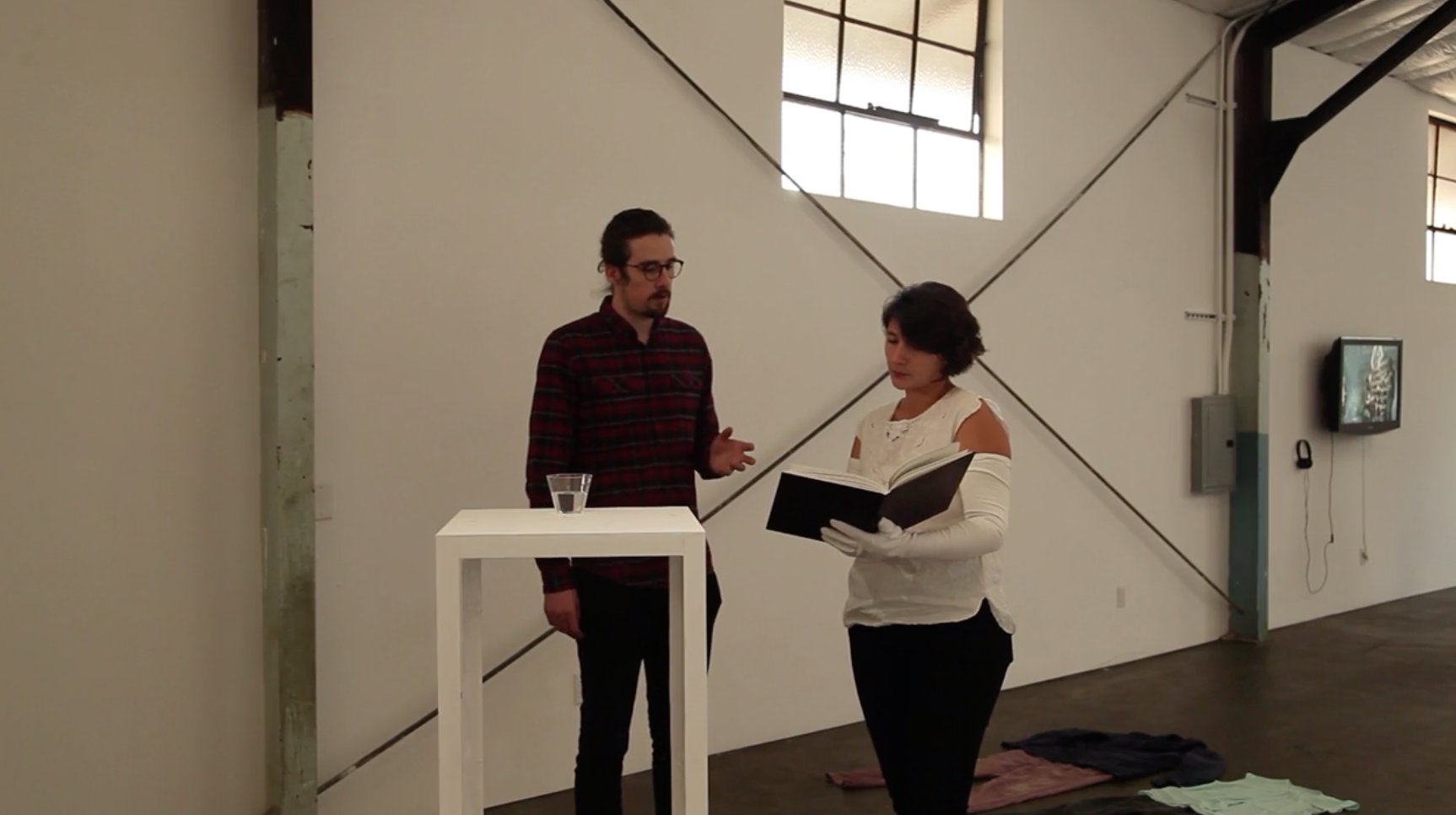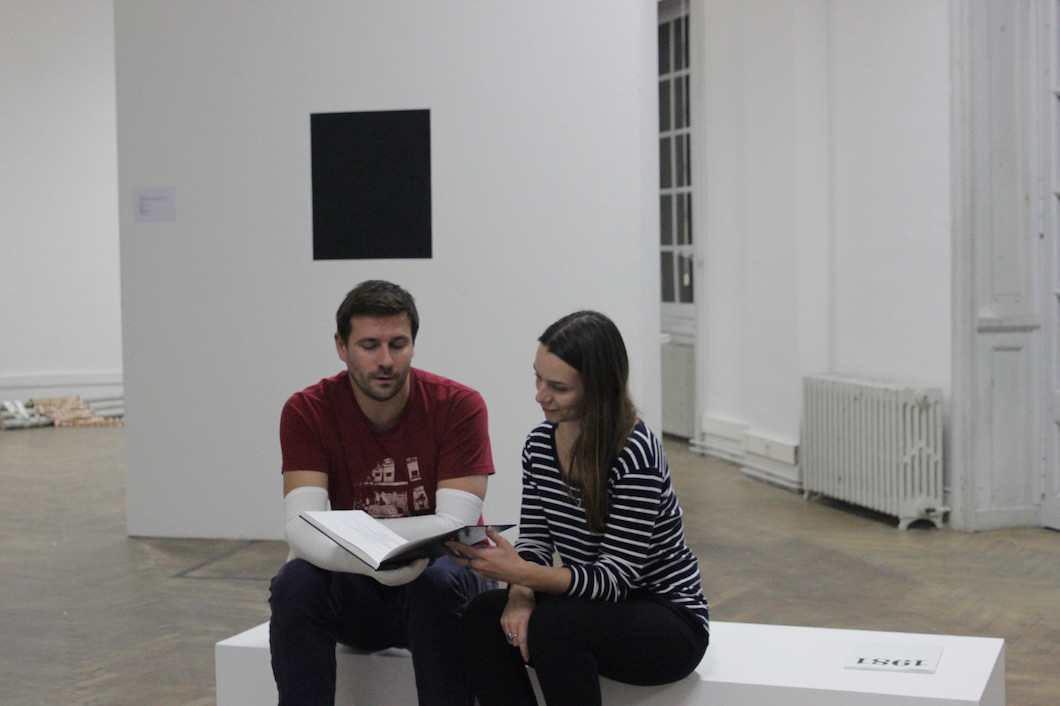The Tyranny of Distance
Pierre Paulin, Sydney, 1981. An Introspection for Two Voices in a Bar, 2017
Book written by Maxime Boidy and Pierre Paulin, gloves
"Sébastien: This offers a good link to the work of Pierre Paulin, who in his piece collaborated with another artist Maxim Boidy to translate a particular text to compose a performative publication. You will hear a reading of the piece after the curators walk. The publication is not a one-to-one translation from the original text, but instead is an illustration of their relation to the text. What they wanted to show in this project is that all translation always takes place from a situated position, and that in every process of translation the translator expresses something of him or herself.
Anna: Here the artists translated a critical text by conceptual artist Ian Burn. Burn himself moved from the US to Australia, and in his text writes about the reception of conceptual art in Australia and uses this outside perspective to call out the insincerity of some claims of conceptual art. Using a Marxist analysis, Burn points out the colonizing effect of bringing conceptual art to Australia, and also its effect of deskilling artistic labour. He uses as an example the tradition of Latin-American mural painting in Mexico and California as a particular artistic skill- set that has been devalued by conceptual art. So it’s talking about reception by those outside the millieu of contemporary art both geographically as outside the US and outside through other systemic circumstances such as class, or education.
Sébastien: So for their translation of this text Pierre Paulin and Maxim Boidy transformed it into a conversation that they held together in a bar in Australia. And as Anna said, this conversation articulates their own relation to this text. For the exhibition here in LA they have translated this conversation into Spanish as yet a further layer of commentary on the elitist and exclusionary language of contemporary art (English), which often ignores the specificity of place, and cultural differences.
Maud: So here one of the connections we can draw between the works of Fortier and Paulin is the idea of transmission and reception, the fact that in taking an idea or an experience outside of its context —in this case a scent, or a practice such as conceptual art— the meaning and reception change. Translation, because it is always embodied, changes the object or experience that is translated."
This text is an excerpt from the performance The Infiltration by Joshua Schwebel whose project was to infiltrate the curators’ position in the exhibition. Read more
